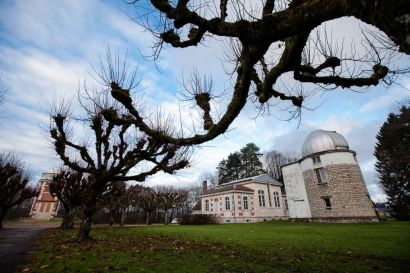Méthodes numériques pour étudier les modèles de réseau SU (N) de Heisenberg
15 Février 2017
L'institut UTINAM accueille Pierre Nataf de l'Institut de physique théorique de l'École polytechnique fédérale de Lausanne, qui animera un séminaire.
Pierre Nataf ne présentera pas seulement les résultats de son équipe sur le modèle Hamiltonien de Heisenberg mais consacrera aussi un peu de temps à la description d'autres méthodes numériques (DMRG, Quantum Monte Carlo, Variational Monte Carlo, etc…) utilies dans la simulation de ces systèmes et qui illustrent le genre d'outils numérques que les physiciens théoriciens développent actuellement dans le champ des systèmes fortement corrélés.
Systems of multicolor fermions have recently raised considerable interest due to the possibility to experimentally study those systems on optical lattices with ultracold atoms. To describe the Mott insulating phase of N -colors fermions, one can start with the SU (N) Heisenberg Hamiltonian. In the case of one particule per site, the SU (N) Heisenberg Hamiltonian takes the form of a Quantum permutation Hamiltonian. H = J Σi,j P <ij>, where the transposition operator P <ij> exchanges two colors on neighboring sites. Pierre Nataf et al. have developped a method to implement the SU (N) symmetry in an Exact Diagonalization algorithm. In particular, the method enables one to diagonalize the Hamiltonian directly in the irreducibe representations of SU (N), thanks to the use of standard Young tableaux, which are shown to form a very convenient basis to diagonalize the problem. It allowed them to prove that the ground state of the Heisenberg SU (5) model on the square lattice is long range color ordered and it provided evidence that the phase of the Heisenberg SU (6) model on the Honeycomb lattice is a plaquette phase. They have also extended the method to the case where there are m ≥ 1 particles per site in the fully antisymmetric and symmetric irreps of SU (N) in order to study SU (N) critical chains.
Horaires
15 h
Lieu
- Observatoire de Besançon
34 avenue de l’Observatoire
BP 1615 F
25010 Besançon Cedex
Tél. 03 81 66 69 00




